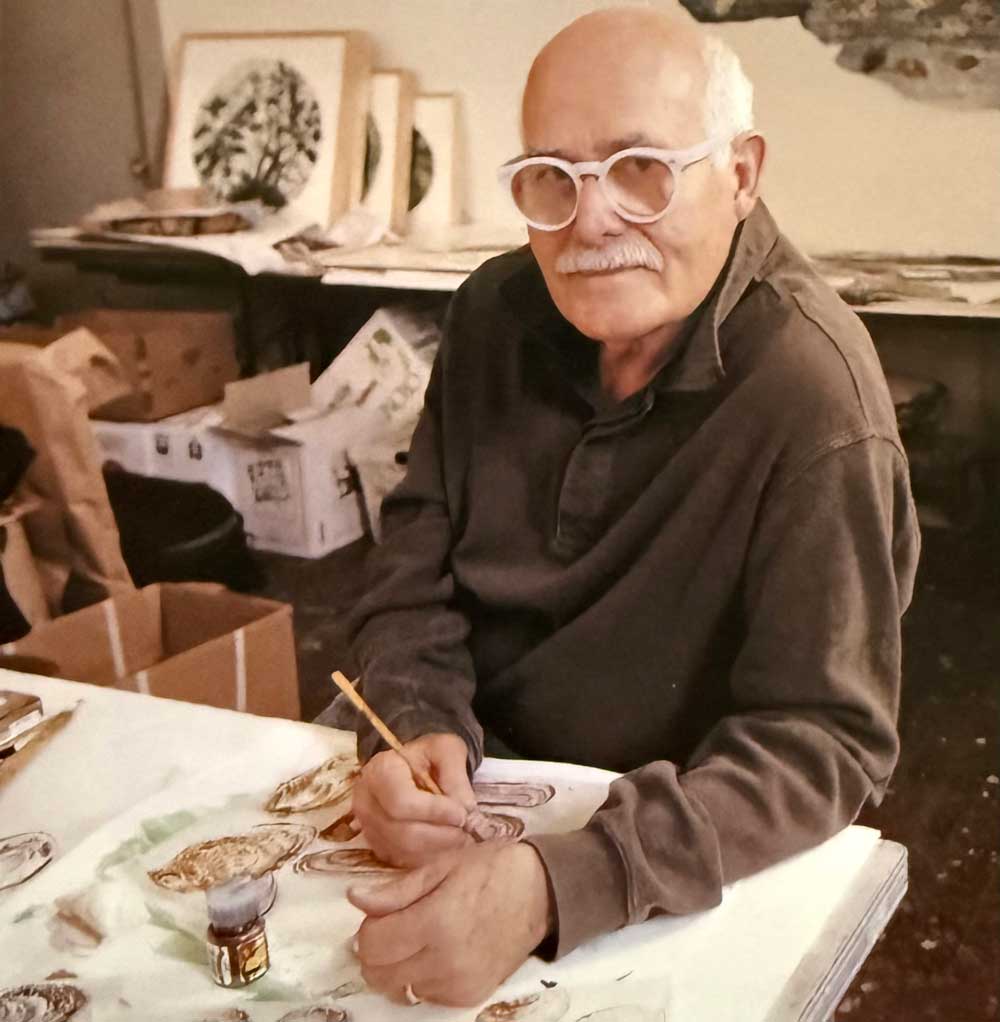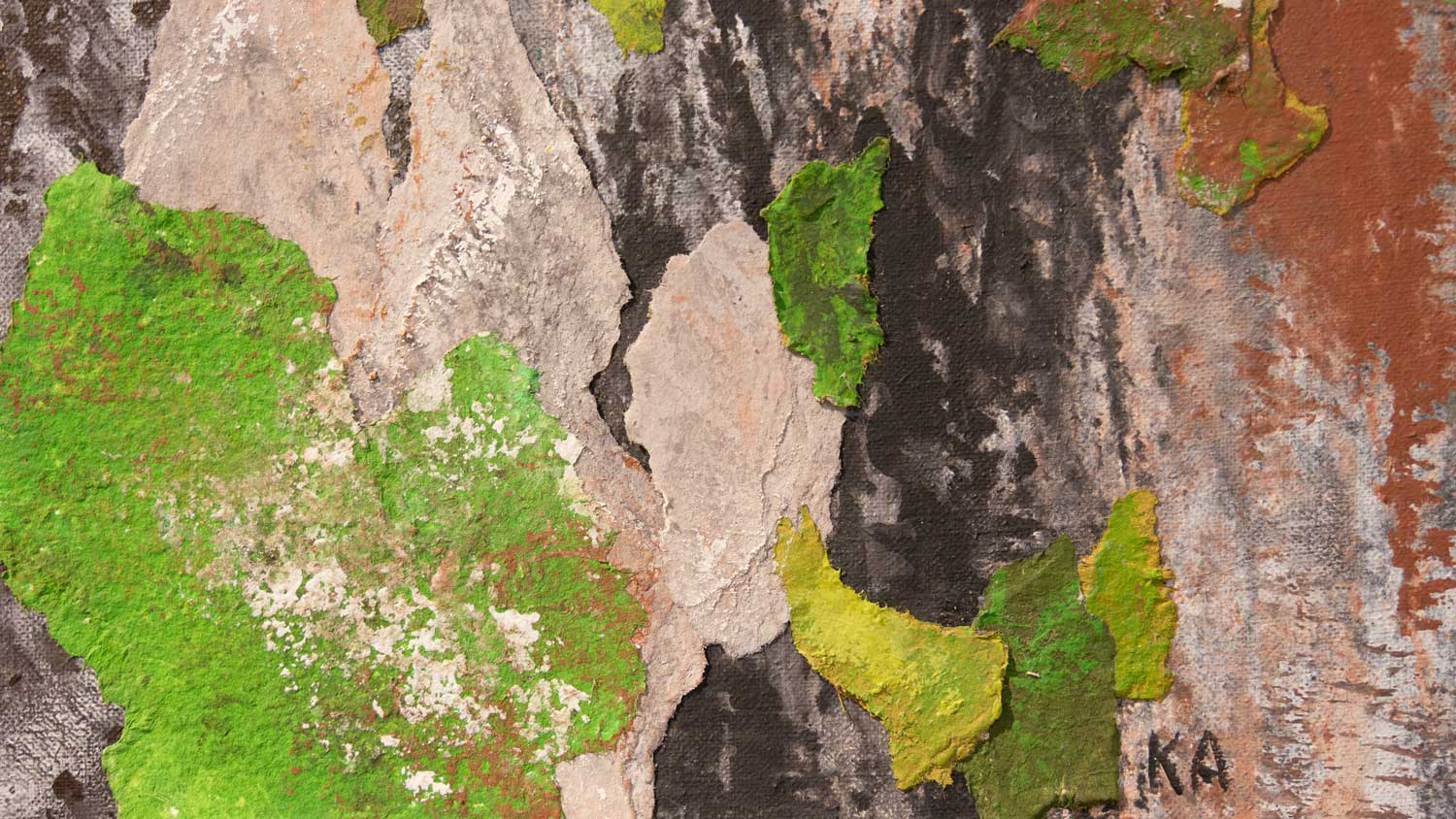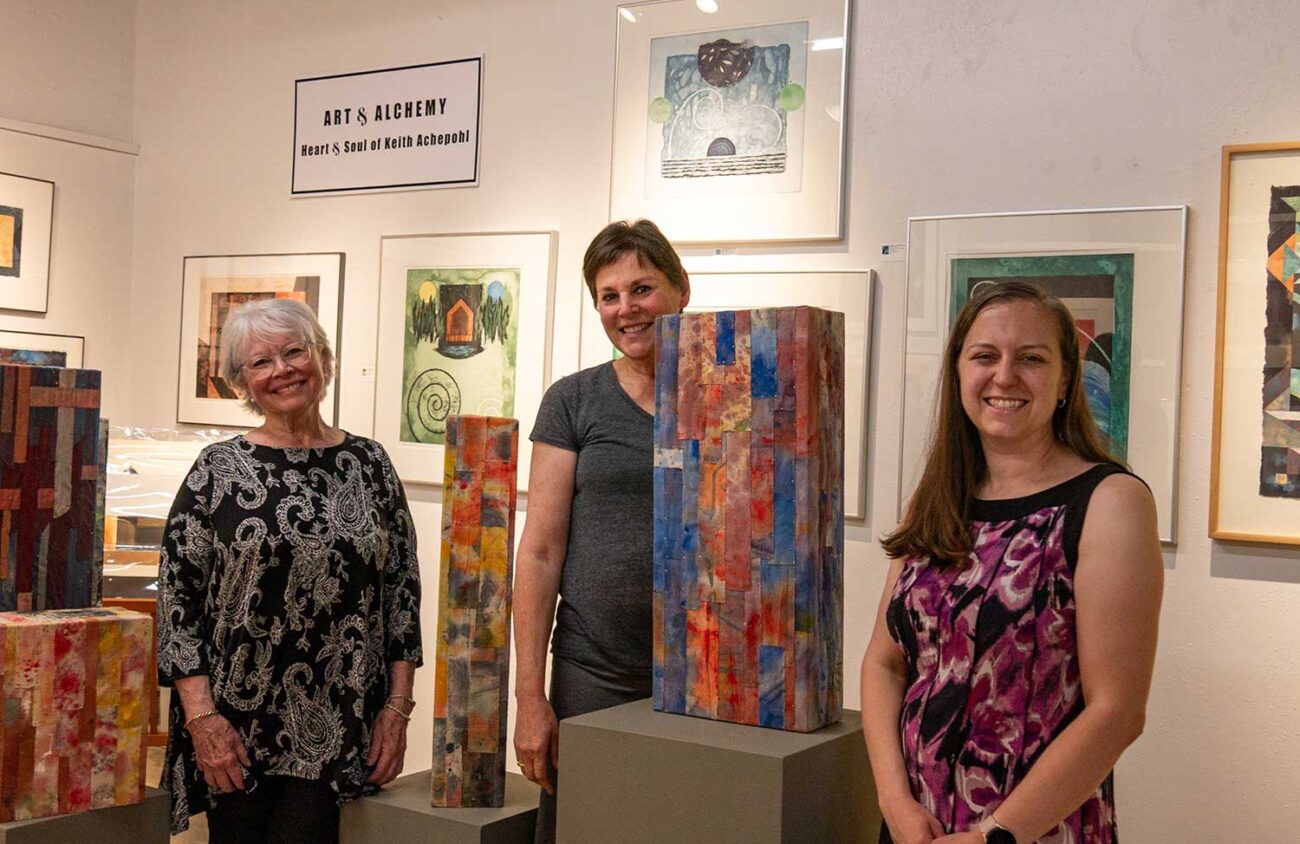“It’s like turpentine, oil paints and canvas, it’s the smell that we all like and still here,” says Cindy Achepohl, the daughter-in-law of the late American artist Keith Anden Achepohl (1934-2018), as we walk into the art studio. Keith Achepohl moved from his three-story schoolhouse studio in Iowa to Eugene to be closer to his family for the last years of his life, working in this one-room studio in southwest Eugene.
Achepohl was a painter, multimedia visual artist and also an art collector who devoted his life to pursue teaching and sharing art in many parts of the U.S. and internationally. Achepohl’s art works have been showcased and recognized at the Smithsonian American Art Museum and its Renwick Gallery. Around the country and the world, his works are part of permanent collections at 89 museums, according to his daughter-in-law.
Walking in, the smell immediately reminds me of the art classroom in grade school, where wooden tables and different materials bring character to the space. Cindy Achepohl starts playing opera on cassette tape, which she says Anchepohl often played in his studio. You can tell by the paint marks which tables he used for painting and which for holding his work. Now, his art is getting labeled and organized to prepare for shows and sales.

On the corner of the New Zone Art Gallery, Achepohl’s art from his early time to late works are displayed through July 27 as ART & ALCHEMY: Art & Soul of Keith Achepohl. One of his last works is titled Forest Seen(s), which he created during his time at Morris Graves Foundation Residency at The Lake in northern California in 2011. He used handmade Italian paper to make the texture of the tree bark by collaging and making the layers.
“When you are looking at a forest, you might focus on an individual tree, but your eyes are focused through the tree, up and down, and the depth of it,” says Danielle Knapp, the McCosh curator at the Jordan Schnitzer Museum of Art. She described the paintings as “where it’s recognizable but something still surreal and it kind of puts you into this tingly place.” The canvases have textures from Achepohl’s artistic technique to see the complex and layered tree that he observed.
Knapp says the Graves residency is prestigious and exclusive and requires invitation, and the program itself also cuts off life from any distractions, even phones. It was to focus and deepen the appreciation of nature and to really see.
At New Zone, Achepohl’s works are displayed as his life went. His early paintings pop up colorful, geometric and playful, and were inspired by his visits to Egypt in 1977 and Turkey in 1984 on Fulbright grants. Throughout his travels, he saw a common theme of finding and seeing light through darkness, which dark and light colors play around on canvas in his many other works as well. Even though he is called an American artist, his daughter-in-law calls him a “person of the world,” as he traveled extensively, observed and interacted with cultures and traditions with great respect, and brought them back as a collection or inspiration for his next work.

“Focus on looking, appreciating and slowing down, to surround yourself with what I am really seeing is a common thread,” his daughter-in-law says of Achepohl’s work.
She notes that Achepohl’s grandmother always took him to the Art Institute of Chicago and enrolled him in its art class every Saturday. His works are now displayed in its permanent collection. “It went full circle,” she says, and adds of her father-in-law and his approach to art, “He infused his art with joy.” Although his style and inspiration shifted over his career, his relationship with art seemed to be steady, focused on joy and observation.
On his studio wall, family pictures hang. His daughter-in-law says that Achepohl loved spending time with his family and sharing his art and what he saw while asking them, “What do you see?” — he meant, what do you “really see,” and he would take time to listen, she says.
You can also experience Achepohl’s art at the Don Dexter Gallery this fall. “We believe this work is so very relevant in today’s world, and we are honored and delighted to bring it and its message to Eugene,” says gallery owner Don Dexter.
Find Keith Achepohl’s work at the New Zone Art Gallery, 110 East 11th Avenue, noon to 6 pm Tuesday through Sunday through July 27, or visit Keith-Achepohl at ArtworkArchive.com to see his works online. Also, visit “Wishing Tree: Keith Achepohl Retrospective,” at the Don Dexter Gallery, 2911 Tennyson Avenue, Ste 202, 9 am to 5 pm, Tuesday through Saturday Sep. 6 through Oct. 31.
